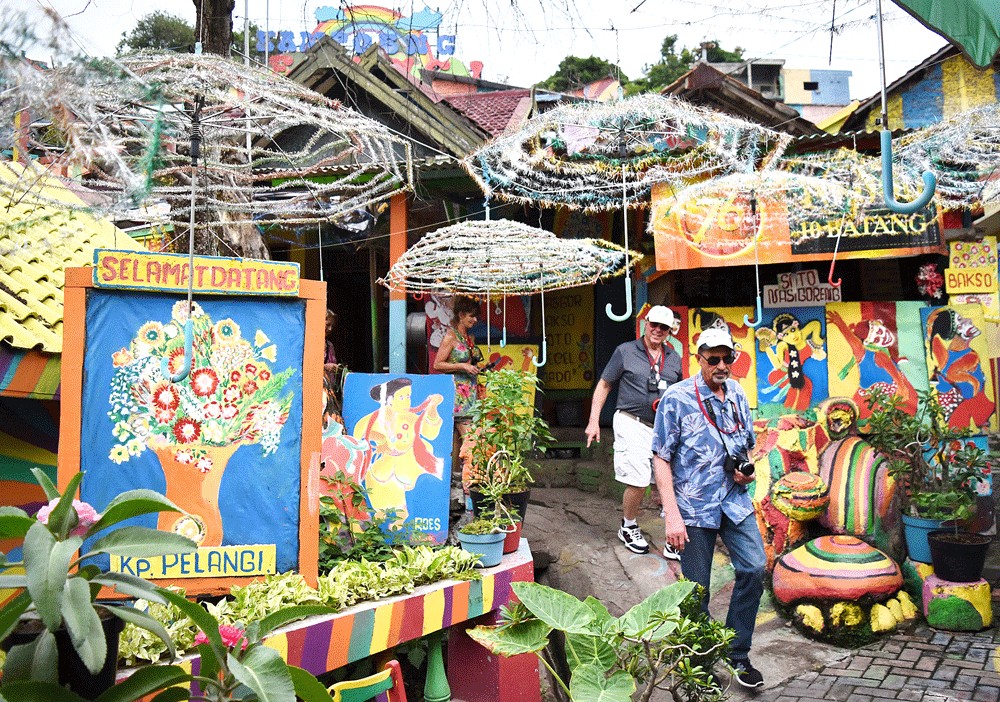Popular Reads
Top Results
Can't find what you're looking for?
View all search resultsPopular Reads
Top Results
Can't find what you're looking for?
View all search resultsCentral Java reduced 4,000 hectares of slums since 2014: Official
Based on data collected by regents and mayors across the province, Central Java had 6,981 hectares of slums in 2014, said provincial People Housing and Residential Area Agency head Budi Wibowo.
Change text size
Gift Premium Articles
to Anyone
 Foreign tourists visit Kampung Pelangi Wonosari in Randusari, Semarang, Central Java, on Tuesday. Located at the foot of a mountain, the kampung was once a slum. In the past year, it has turned into one of Semarang’s primary tourist destinations after the city administration and local residents cleaned up the area and painted the houses in bright colors. (Antara/Aditya Pradana Putra)
Foreign tourists visit Kampung Pelangi Wonosari in Randusari, Semarang, Central Java, on Tuesday. Located at the foot of a mountain, the kampung was once a slum. In the past year, it has turned into one of Semarang’s primary tourist destinations after the city administration and local residents cleaned up the area and painted the houses in bright colors. (Antara/Aditya Pradana Putra)
T
he Central Java administration has reduced nearly 4,000 hectares of slums since 2014 or some 57 percent of the total slum areas in the province, an official has said.
Based on data collected by regents and mayors across the province, Central Java had 6,981 ha of slums in 2014, said provincial People Housing and Residential Area Agency head Budi Wibowo.
The area has been reduced to 3,004 ha this year, he added.
“We will continue to eradicate the province’s slum areas,” said Budi after attending a workshop on slums in Semarang on Monday.
Slum eradication was conducted by, among other things, building embankments and liveable houses, or turning the slums into a tourist village, such as Kampung Pelangi (Rainbow Village) in Semarang.
The remaining 3,004 hectares of slums, according to Budi, would be eradicated by related institutions so that by 2024, no slums would be left in the province as targeted.
“Eradicating slums is important because it doesn’t just make the region tidy, but it also has something to do with the people’s living conditions,” Budi said.
Central Java Governor Ganjar Pranowo pointed out that eradicating slums should not be done by just prioritizing the infrastructure factor; social and cultural factors also needed attention.
Slum areas represent a number of social problems such as poverty, unemployment, narcotics and crime, all if which need attention, he said.
“So, don’t just change the display; the people’s culture also has to change,” Ganjar said.
Arranging slums were important for the beauty of a region as well as to improve the people’s prosperity, he said.
The prosperity of the people of a country, he added, could be seen from whether it had slums, pointing out that developed countries have very few slum areas. (swa)









